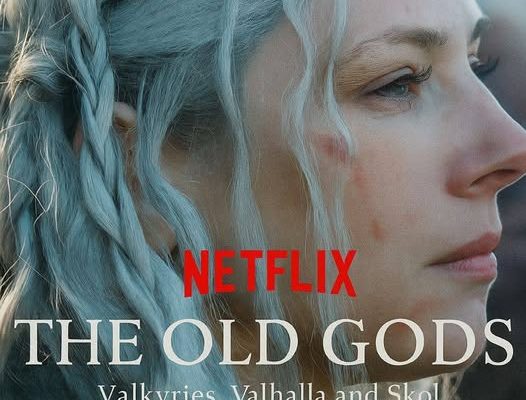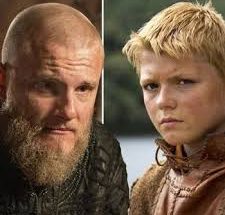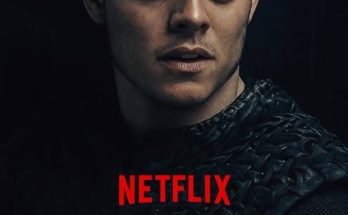From the very moment the trailer for The Old Gods dropped, the internet collectively shuddered with excitement—and rightly so. This latest foray into Viking‑fantasy territory is the epic everyone’s talking about, and it doesn’t just lean into the blood‑soaked sagas of Norse mythology—it drags them into their shadows and lights them on fire. With a transformation that has stunned fans across the globe—Katheryn Winnick appearing as a silver‑haired Valkyrie of terrifying beauty and steel‑cold purpose—the show signals that this is not your typical “raiding longship, shield‑wall, glorious dawn” kind of Viking story. It’s darker, more primal, and willing to tear down mythic icons in order to rebuild them in a harsher, more uncompromising light.
What sets The Old Gods apart is its refusal to sentimentalize the Viking age—or the gods who loomed over it. While Vikings: Valhalla (also on Netflix) certainly delivered its share of gore, grandeur and mythic resonance, The Old Gods cranks each one of those elements up to a level where the line between heroism and horror blurs. Where Valhalla made room for redemption, camaraderie and—even amidst the chaos—hope, The Old Gods positions fate not as something you might wrestle with, but as something you surrender to only when your own blood dries on the battlefield. The transformation of Winnick’s character is emblematic of this: the Valkyrie here is not a celebratory warrior of the fallen, but a harbinger of cold reckoning, meta‑mythic in her presence and devastating in her resolve.
The show’s very atmosphere is oppressive in the best sense. Mist clings to fjords, torchlight flickers off iron‑shod boots, the cry of raven wings echoes in the distance—not as promise but as omen. The camera lingers on the moment when myth gives way to flesh: when the gods show cracks, when Valkyries bleed, when mortals realise the cost of pledging their souls. Critics calling it “a divine masterpiece that redefines Norse mythology on screen” are not off the mark—this is a re‑definition. The gods of old are stripped of their unreachable glory and shown as entities of consequence, fear, longing, and ruin. It’s one thing to screen an epic about Viking raids; it’s another to stage the fall of deities and let heroes wander among the debris.
What is perhaps most fascinating is how The Old Gods uses the familiar scaffolding of Viking‑era storytelling—the longships, the shield‑walls, the frost‑bitten expanses—but retools it into something far more existential. The Valkyrie is silver‑haired not for aesthetic glamor, but because the frost of ages has coated her grief and her vengeance in something otherworldly. Winnick, known previously for playing the fierce shield‑maiden Lagertha in Vikings, is now almost unrecognisable: less human warrior, more inevitable force. Watching her stride across frozen fields, spear in hand, is watching time itself press a blade against your throat. Everywhere you look in this show there is a sense of inexorable doom—onslaughts of men and beasts, the gods brooding in their halls, fate humming like a lute string pulled to its breaking.
Of course, the show doesn’t neglect character. In this blitz of myth, mythic‑figure and mythic‑violence, you still feel the human pulse beneath the armour. Mortals love, betray, despair. Gods wring their hands over legacy and oblivion. The Valkyrie herself is more than a weapon of vengeance—her silver‑hair glints with memory, perhaps sorrow, and the weight of duties both ancient and newly claimed. She is the connective tissue between what the mortal world believes about the gods and what the gods know of the mortals. The Old Gods asks: When the gods fall, who picks up the shards? And when the mortals rise, are they any less divine for doing so?
Visually, the series is a feast for those craving grand scale, and a nightmare for those who look too closely at the cost. Nights are darker than you’ve seen in earlier Viking epics, the shadows deeper, the fires high. Flesh tears, gods bleed, and amid all this there is an elegance to the carnage—a choreography of doom. As one reviewer put it of a similar mythic‑retelling, “If you want your introduction to Norse mythology to be action‑packed, fast‑paced, and full of pubescent blood, sweat, sex, and gore—then…” you get the point. thevikingherald.com+1 The Old Gods doesn’t just amp up the grit—it resets the standard.
In the comparison with Vikings: Valhalla, which earned praise for its historical drama and Viking clashes, The Old Gods moves further into the mythic, and darker. The battles don’t end at the longhouse; the gods aren’t exalted—they’re haunted. Where Valhalla offered sweeping vistas and epic raids, The Old Gods gives you the vantage point from inside the collapse: the lament of the gods, the rise of the slain, the question of what legacy truly means when eternity weighs like an iron crown. In that way, the series finds fresh ground amid terrain that’s been well‑trodden.
The cultural significance is also clear. In a streaming landscape full of reboots, prequels, and myth‑adaptations, The Old Gods stands out for being unafraid of being bleak, unflinching in its portrayal of war, faith, fate and divine reckoning. It does not sugar‑coat the glories of the past; it extracts them, grinds them down, and shows you what remains thereafter. It challenges the viewer: Are we drawn to myth because it elevates us, or because we admire the fragility behind the power? The Valkyrie’s silver hair is a symbol: age, experience, the trail of battles she has witnessed, the ones she still carries inside her. Fans worldwide are stunned—both by the sheer ambition of the show, and by its refusal to soften its edges.
It might provoke debate about whether it goes too far—whether there is a tipping point at which myth becomes nihilism, or violence becomes spectacle. But that’s part of the point. The best myth retellings don’t hold your hand; they challenge you. They make you reconsider what you thought you knew about gods and men. And The Old Gods does exactly that. If you’ve watched Viking epics before and thought you’d seen it all, the appearance of a Valkyrie whose hair glows like moon‑frost and whose spear is vengeance incarnate may just be the image that redefines it for you.
In the end, what remains is the sense that we are witnessing something that isn’t content to ride on the coattails of familiar sagas. It wants to remake them. It wants to dig into the unspoken, the unsung, the aftermath of glory. The Valkyrie stands among bones and auroras, among gods fallen and men risen, and invites us to ask: in a world where even immortals bleed, what does heroism truly mean? The Old Gods has become the Viking fantasy epic everyone is talking about—and with its silver‑haired Valkyrie leading the charge, it might just become the standard‑bearer for myth on screen for years to come.



